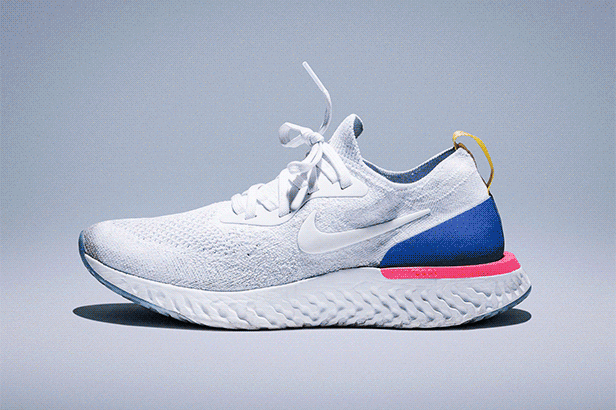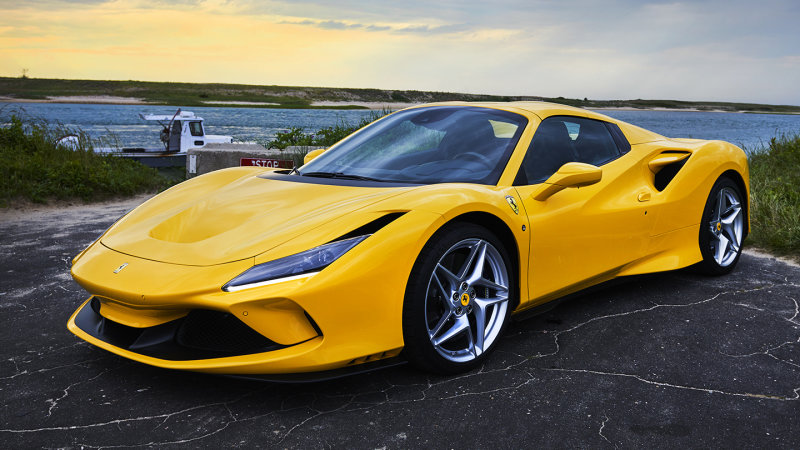The Vivoactive 3 Music is an update to the much-loved Vivoactive. Garmin has long created spot-on tracking watches for runners, but has struggled to find the perfect balance for someone who wants an everyday tracker. As with all things Garmin, the watch is moving in the right direction. With the Vivoactive 3 Music, you can put it on and forget about it, checking your data, steps and workout minutes later. I wore one for three weeks and had to charge it roughly four times, which compared to many other GPS-enabled tracking watches, is top-notch.
The Good: The battery life lasts for a solid four to five days, and that includes tracking activities. The watch claims to have a seven-day battery life, and if you’re not logging GPS miles, that’s likely possible. The advanced sleep technology is a welcome update with REM, deep sleep and the number of times you wake up at night, all in the app. You don’t have to press any buttons to let it know you’re going to sleep. Beyond that, the Vivoactive 3 Music is very similar to the Vivoactive 3. It’s the same easy-to-use and lightweight watch, now with the capability to hold up to 500 songs.
Who It’s For: The Garmin Vivoactive 3 Music is built for Vivoactive lovers who want to upgrade and people who want a watch they can wear every single day. Designed for weekend warriors and people who like to set it and forget it, this watch tracks everything you do from swimming to rowing to sleeping. You can even add machines at the gym like the elliptical or stair stepper and the watch will monitor your activity. And you can use Garmin Pay to leave your wallet at home while you’re working out.
Watch Out For: The Vivoactive is smart — just like Garmin’s of the past — and like the Garmin Forerunner 645 with music, it’s only as strong as your music apps. So if you don’t use iHeartRadio, Awa Music or KKbox, then you can’t store any music on the device it’s. I found that Spotify from my phone streamed just as well and connected as well with the watch as it does normally, but you still have to have your phone nearby.
The Garmin Vivoactive 3 Music has spot-on GPS tracking and great heart rate monitoring, but occasionally, when you use the HIIT feature or try to log an interval workout, the tracker is slightly off. You’ll have to pay close attention to your HR during rest periods to guarantee accuracy. But if a few HR beats off during your recovery doesn’t bother you, then overall, it’s totally fine.
Alternatives: There are many other Garmin models, like the Forerunner 645 (which also comes with the option for music that we reviewed. If you’re looking for the best GPS running watches, the Vivoactive 3 Music will do the trick, but there are better options that are more expensive (Forerunner 935 and Suunto Spartan Ultra for example). If you want a smart watch to wear all day long, the Fitbit Ionic ($330) or Apple Watch ($329) are both viable options. Another one worth mentioning (and at the exact same price) is the Samsung Gear Sport ($300). Samsung is also the official Spotify partner, so you can download Spotify playlists onto your watches.
Review: The Vivoactive 3 Music offers all the same features the Vivoactive 3 does, just with the capability to add music. And there is the additional feature of advanced sleep tracking. You still get Garmin Pay, pre-loaded workouts for everything you can imagine, VO2max estimation and stress monitoring. It seamlessly connected to my Apple iPhone and downloading new apps for the watch was a breeze through the Garmin IQ app.
As soon as I strapped the watch on, I didn’t give it a second thought, except when I needed to charge it. I could shower, run, bike, swim and sleep all without pressing a button. Granted you do have to tell it when you’re working out to get actual data points, but it does start auto tracking intensity minutes. Unlike other trackers I’ve worn, I didn’t have to tell it when I was jumping in the lake or hopping in the shower.

Physically, the watch is much lighter in weight than a Fenix 5 (85 g) or Fitbit Ionic (50 g), but roughly about the same as an Apple Watch (26.7 g for 38mm aluminum) and the Fitbit Versa (38 g). The all-black watch face is easy to read even in variable light conditions thanks to a backlight, which you can turn on or off for activity. It’s easy to download new watch faces from the app, and the chemically-strengthened glass didn’t show any scratches during my testing period. It worked with everything from dress shirts to t-shirts.
Some of the more unique features of the watch are the stress tracking and sleep tracking. Your phone tracks steps, standing hours and walking distance these days, so it’s nice to wear something 24/7 that monitors more than just that. Thanks to advanced sleep tracking, you won’t want to charge it at night, like many other GPS-trackers (unless it’s out of battery). Each morning, I could wake up, open the app and view my sleep details, which include deep, light, REM and awake times. On a blue and purple mood graph, I could check out how often I moved before I went to bed, as well as right before I awoke. I also use a Nokia Sleep Tracking Pad ($100), which lies flat under my mattress, and my total hours and minutes of sleep each night were typically within one minute of each other.
I was most impressed with the battery life. Over the course of three weeks, I only had to charge it four times. I normally run or workout every single day, and therefore am used to charging a watch every night, so this was impressive. I even wore it all week long at Outdoor Retailer and thought for sure it would die after those long days in the conference hall because of my morning workouts and constant fiddling with my phone, but it lasted all week. It goes from dead to 100 percent in roughly an hour and 46 minutes. I never charged for longer than two hours. It is relatively slow at first, but once it hits 60 percent, the quick charging begins.
GPS and fitness-wise, it’s a standard Garmin tracker. The barometric altimeter logs the number of floors you climb, and the GPS logs your distance. In New York City, I found it took roughly seven to 10 seconds to trigger the GPS, but you can always start the run without it. When I traveled upstate where there’s really no service, I simply started and stopped the watch over the course of a set distance so I could check out my pace. GPS accuracy, for the most part, was spot on, and I could check out my time, distance, calories, pace, elevation gain, speed, heart rate, cadence and heart rate post-run to track my progress.
Verdict: If you’re a Garmin fan, the music and advanced sleeping tracking might be worth it to upgrade from the Vivoactive 3 or from Vivoactive watches of the past. However, if you don’t use iHeartRadio, Deezer, Awa Music or Kkbox, it might be worth it just to use the Garmin Vivoactive 3. If you’re a Spotify listener, you can still stream the music anywhere you have service, as long as your phone is with you. However, if you’re looking to never carry your phone on a run and don’t need music, the Vivoactive 3 is for you.
What Others Are Saying:
• “Garmin’s long since argued that when selecting between something like a Fitbit and a Garmin watch, their own watches cater more towards the sports crowd than not. And that’s certainly true, you can easily see that within the sport modes that are offered and the depth of the data that comes from the watches. When competing against Apple, both Fitbit and Garmin tout their battery life – putting them at roughly a week between charges versus a day or two. Of course, neither company can compete against Apple in the depth of apps that the Apple Watch has. But as has been proven, neither really has to. Both companies are selling more smartwatches than ever before, despite the Apple Watch (with Garmin even recently overtaking Fitbit).” — Ray Maker, DCRainmaker.com
• “Unlike Garmin’s more hardcore Forerunner series, the Vivoactive 3 Music targets urbanites looking for a do-it-all device they can wear all day: at home, the office, the gym, and all points in between. Even at night, thanks to the inclusion of new Advanced Sleep Monitoring in Garmin Connect. It’s also swim and shower safe with a battery life of seven days in smartwatch mode, or five hours in GPS and Music mode.” — Thomas Ricker, The Verge
• “The Garmin Vivoactive 3 Music is the phone-free sports watch the Vivoactive 3 always wanted to be. Not only that, but on balance this is Garmin’s best smartwatch right now, and it finally looks the part. Serious runners will want to look to the Forerunner series, but the Vivoactive 3 is a great balance of sports and smarts.” — Hugh Langley, Wearble.com
Key Specs
Physical size: 43.1 x 43.1 x 13.6mm
Weight: 39.0 g
Water rating: 5 ATM
Hot takes and in-depth reviews on noteworthy, relevant and interesting products. Read the Story





